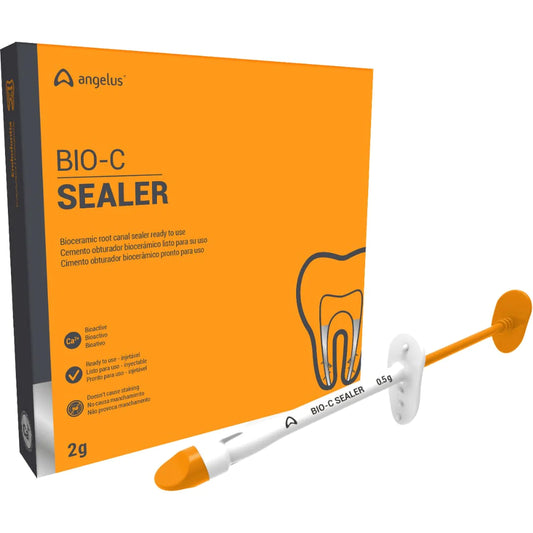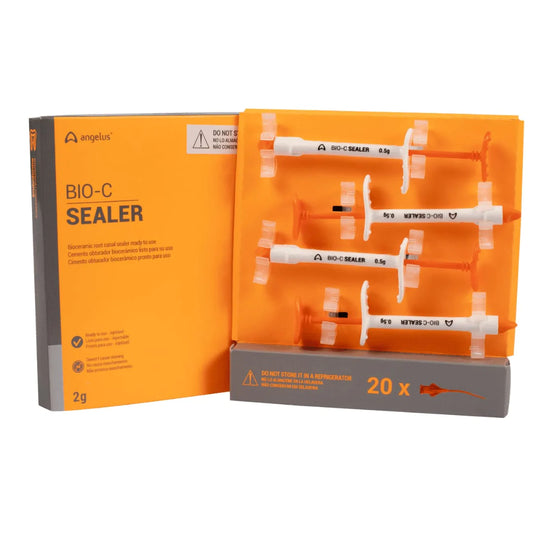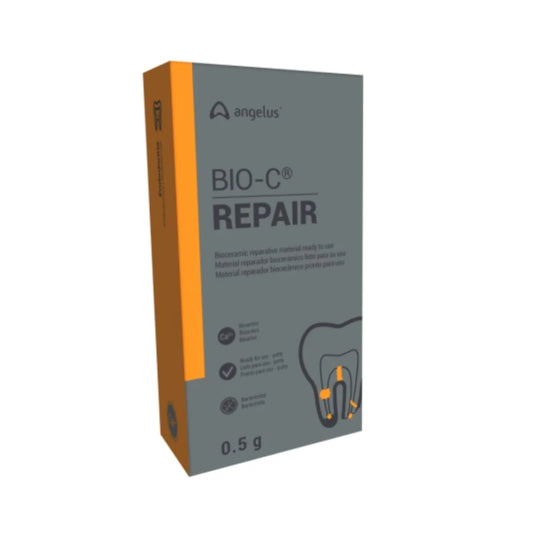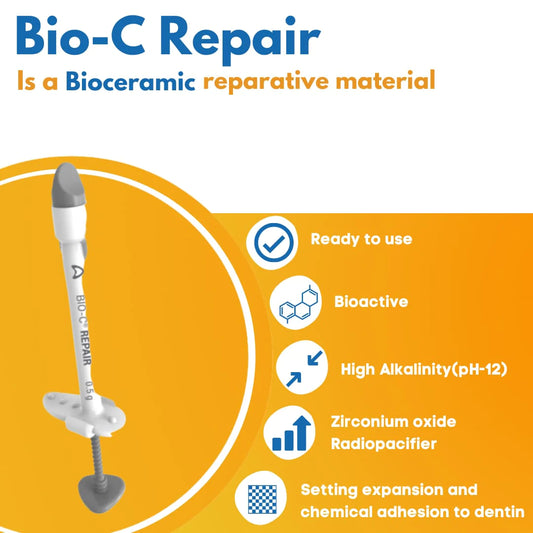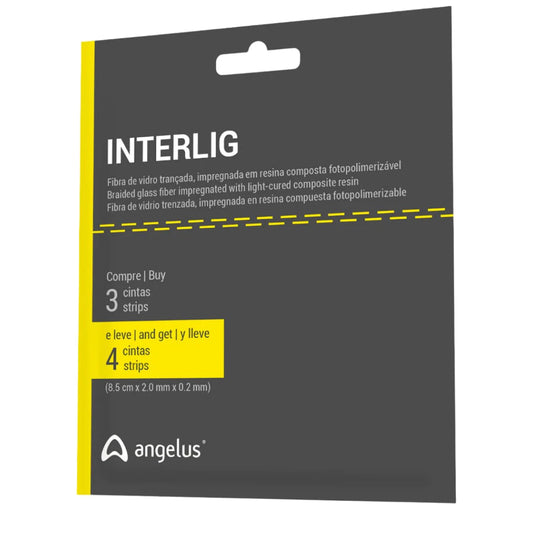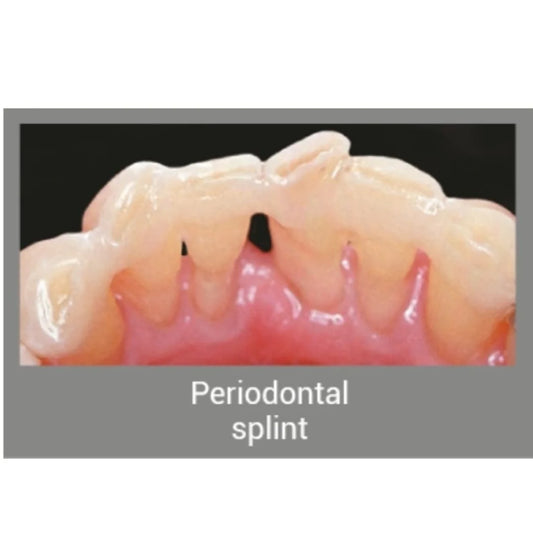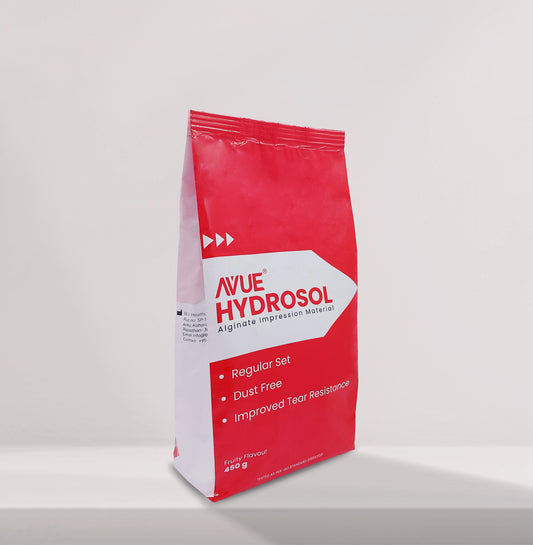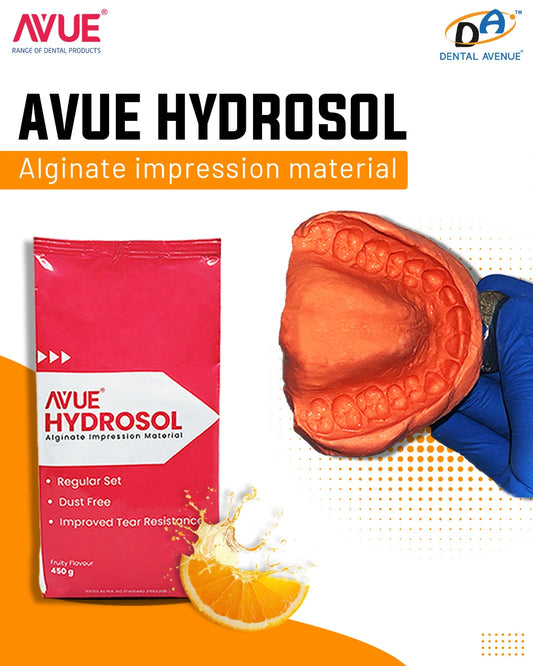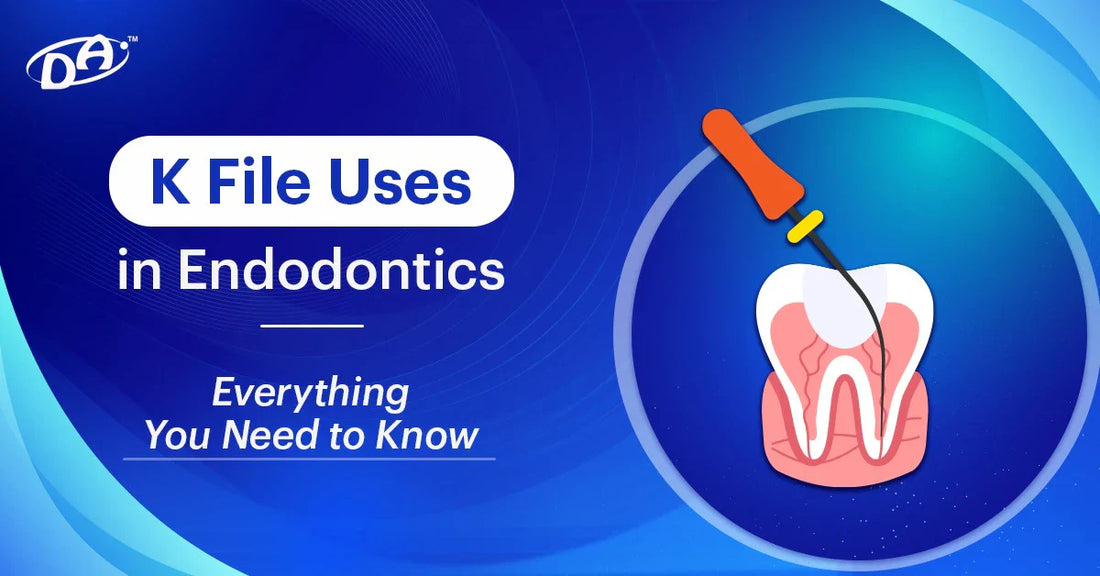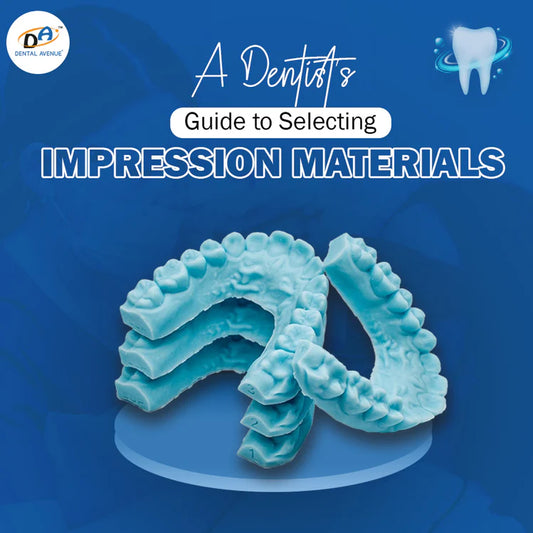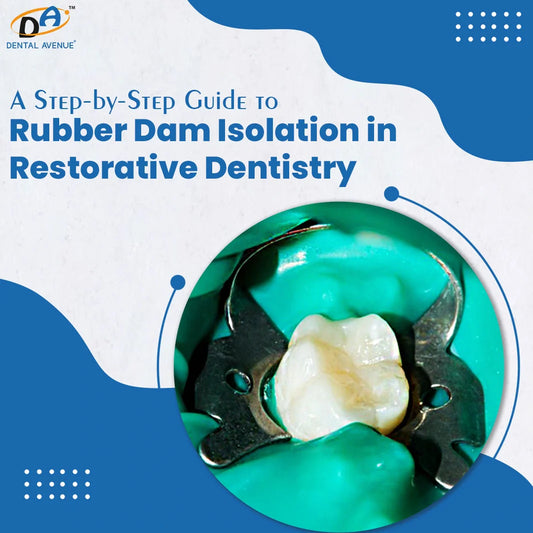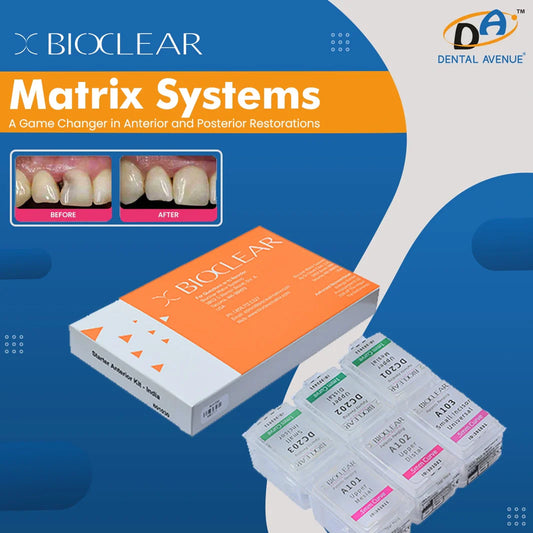K files are among the most trusted and time-tested instruments in endodontics. The success of the dentist in performing a root canal depends on the instruments they use.
As an experienced endodontist or general dentist, knowing the specifics of K files may help you transform your practice.
Let’s break down & learn about K-file uses, their design, standardization, and how they compare to other endodontic instruments.
Alternatively, consider the latest research, best practice recommendations on sterilisation, and what's new in the market, especially when purchasing endodontic files.
What is an Endodontic File?
Endodontic files are the mainstay of root canal therapy. Endodontic files are tapered, pointed endodontic files used to mechanically debride, shape, and enlarge the root canal system, either manually or using rotary systems.
They mainly remove infected tissues and shape canals to perform obturation and confirm that the canal is not occupied with debris and bacteria. The development in endodontic files has been parallel to that in material science and clinical technique, and files are highly efficient, usable, flexible, and safe to work with in the most complicated cases.
Types of Endodontic Files
Endodontic instruments are broadly classified into two main categories based on their method of operation:
-
Hand files
-
Rotary files (Engine-driven).
While rotary systems have modernised many aspects of root canal therapy, hand files remain the foundational tools for nearly every endodontic procedure.
Hand files are hand-operated and will give clinicians tactile feedback, making them very useful in navigating the complex anatomy of canals.
Rotary files are engine-powered devices, usually made of highly flexible Nickel-Titanium (NiTi) alloy, used to shape canals more efficiently and quickly.
Hand files, like K-files and H-files, are essential for initial canal negotiation before introducing rotary files and creating a "glide path" before rotary instruments are introduced.
Hand Files vs Rotary Files
|
Feature |
Hand Files |
Rotary Files |
|
Operation |
Manually operated, providing tactile feedback for precise control. |
Engine-powered, suitable for quick and efficient canal shaping. |
|
Material |
Typically stainless steel or carbon steel. |
Commonly made from Nickel-Titanium (NiTi), offering flexibility and strength. |
|
Usage |
Ideal for initial canal negotiation and creating glide paths. |
Best for shaping canals and removing debris quickly. |
|
Effectiveness |
Less efficient in cleaning and shaping complex canal systems. |
Demonstrated equivalent or superior cleaning efficacy compared to hand files in multiple studies. |
|
Time Efficiency |
Generally takes longer due to manual operation. |
Reduces instrumentation time, allowing quicker procedures. |
|
Flexibility |
Limited flexibility; can be more rigid. |
Highly flexible, which helps navigate curved canals easily. |
|
User Experience |
Requires skill and practice for best results. |
Generally easier to use with a learning curve for settings. |
|
Risk of Fracture |
Higher risk due to manual handling and bending. |
Lower risk when used properly due to material characteristics. |
|
Clinical Applications |
Common in pediatric and complex cases requiring fine manipulation. |
Often used in adult endodontics and in situations requiring rapid removal of tissue and debris. |
1) K-Files
K-files are fundamental to endodontics, known for their versatility and durability. They are manufactured by twisting a square or triangular stainless steel or NiTi wire blank, which creates a series of cutting edges along the instrument's length.
-
Design: They possess a tight spiral of flutes with a cutting angle between 25 and 40 degrees relative to the long axis. The square cross-section provides strength, while a triangular cross-section offers increased flexibility commonly used with endo rotary files for advanced canal shaping.
-
Clinical Function: K-files are used with a filing or rasping motion (push-pull) and a slight rotation (quarter-turn and pull). This bidirectional action allows them to effectively remove dentin, clean canal walls, and establish patency in both straight and curved canals.
Modifications of K Files
-
K‑Flex/K‑FlexoFile designs use a rhomboid or triangular blank to enhance flexibility and reduce binding—especially useful in curved or calcified canals.
-
Golden Medium sizes fill in ISO size gaps (e.g. 12, 17, 22), offering smoother progression in glide path creation and lowering procedural risk.
-
Flex‑R files blend K‑file control with sharper cutting efficiency, paired with non‑cutting tips made for balanced‑force use.
-
Safe‑ended variants shift cutting action slightly away from the tip, minimizing apical perforation during early canal negotiation.
2) H-Files (Hedstrom Files)
Hedstrom files, commonly called H-files, are machined from a round stainless steel or NiTi wire to create a series of intersecting cones that form sharp, spiralled flutes.
-
Design: H-files feature a tear-drop or comma-shaped cross-section with a positive rake angle, meaning the cutting edges are perpendicular to the shaft. The angle of the cutting groove is significantly steeper than a K-file, at 60-65 degrees.
-
Clinical Function: H-files cut exclusively on the pull or retraction stroke and are often used in removal of gutta percha during retreatments. They are not designed for rotation, as this can cause them to bind in the canal and fracture. Their primary use is for gross removal of dentin and flaring the coronal portion of the canal after a glide path has been established with a K-file.
Modifications of H Files
-
Safety H‑Files and D‑Finders introduce non‑cutting edges or tips to reduce apical or lateral damage during canal negotiation.
-
Unifile and S‑Files adopt double‑helix cross‑sections for enhanced robustness and cutting control.
-
Sharpey H and Hi‑5 files adapt geometry to penetrate calcified or narrow anatomy better.
-
Ergoflex H‑Files offer flexible shaft options for curved canals.
-
Micro‑Debriders bring refined H‑files into retreatment work under magnification.
3) Reamers
Reamers are structurally similar to K-files and can be followed by temporary dental filling placement between visits. This design difference significantly alters their cutting action and primary application.
-
Design: Reamers are longer-pitched (greater flute-to-flute distance) and commonly produced out of triangular blanks, so their cutting edge is less blunt than that of a square-blank K-file. This design with fewer flutes makes them more flexible than a K-file of the same size.
-
Clinical Function: The primary action of a reamer is rotary cutting to enlarge the canal. They are inserted with a gentle half-turn clockwise motion to engage dentin and then withdrawn. This action efficiently removes debris and shapes the canal with less risk of apical blockage compared to the push-pull action of a K-file.
Recommended Read: Dental Equipment List for Dentists
Standardisation of Endo Files
ISO Standardization
Endodontics is all about consistency, and standardisation takes care of that. Endodontic file size and characteristics have an international gold standard, established by the International Organisation for Standardisation (ISO).
ISO 3630-1 makes files from various manufacturers the same in volume, taper, and fidelity, which is essential to predictable clinical results.
Taper and Diameter
Taper refers to the gradual increase in diameter of an endodontic hand file from the tip towards the shank. A standard taper of 0.02 mm/mm is obtained in the majority of K file sizes, i.e., the diameter of the size increases 0.02 mm per millimetre of the cutting length (D1 to D16).
The tip diameter of endodontic files refers to the width of the instrument at its cutting tip (D₀), measured in hundredths of a millimeter—for example, a #20 file has a tip diameter of 0.20 mm.
In addition to D₀, two other key reference points are D₁₆ and D₃₂, which represent the file’s diameter of 16 mm and 32 mm from the tip, respectively. These measurements reflect the instrument’s taper, or how much the diameter increases per millimeter.
K files Color Coding System
According to ISO standards, endodontic instruments are color-coded to show the file size and type. In order to facilitate rapid identification and organization during root canal procedures, each size is associated with a distinct color (for example, #15 is white, #20 is yellow, and #25 is red).
K-File Design and Material Composition
The K-file's performance depends directly upon its cross-sectional design and the material it is fabricated from. These two factors predetermine the card's flexibility and cutting and fracture resistance.
Materials of K Files
-
Stainless Steel (SS): The traditional material for hand files, stainless steel provides excellent strength and cutting efficiency. Though not as flexible as NiTi, these properties benefit the scouting of canals and creating a glide path early on.
-
Nickel-Titanium (NiTi): This alloy became a breakthrough in endodontics. Its properties were shape-memory and superelastic. NiTi-K files are also much more flexible than stainless steel ones, allowing them to overcome extreme curvatures with low chances of lodging, transportation, or fracture.
Practical K File Uses
#1: Cleaning and Shaping
Significant applications of the K-file dental include debris removal and moulding of the root canal system. These are designed along a twisted pattern to enable the use of optimal debris and infected dentin removal, resulting in a shape that creates backfill and irrigation properties.
#2: Glide Path Creation
It is an essential step during the root canal treatment process, particularly before providing rotary instruments, to create a glide path. K files are the most valuable and convenient instrument in this, as they may enter even narrow canals or calcified canals, and thereby decrease the chance of mistakes during the procedure.
#3: Canal Patency and Negotiation
To succeed in cleaning and shaping, canal patency must be maintained to ensure the canal remains open and free from blockage before placing temporary tooth filling material. K files are particularly suited to this as their flexibility and haptic sensation aid clinicians in navigating the difficult anatomy to identify obstructions and follow curvatures.
#4: Clinical Scenarios and Best Practices
K files are indispensable in a variety of clinical situations:
-
Initial Canal Negotiation: Their rigidity and sharp tip make them perfect for exploring and negotiating the canal path.
-
Curved Canals: K flex files and NiTi K files are best in curved canals, and there is a limited chance of ledging or transportation.
-
Retreatment Cases: K files may facilitate unblocking the previously filled canals and the elimination of old filling material when it comes to previously filled canals.
-
Manual vs. Rotary: Although rotary systems may be faster, under difficult conditions, manual K files cannot be improved in identifying areas of tactile control.
K‑File Dental vs H‑File vs Reamer
|
Feature |
K‑File |
H‑File (Hedstroem) |
Reamer (e.g. K‑Reamer) |
|
Cross-section |
Square in small sizes, triangular in larger; tight spiral flutes |
Round blank milled into tear‑drop or cone‑shaped flutes, single-helix |
Triangular cross-section with fewer flutes per length vs K‑file |
|
Debris Removal |
Moderate - more spirals means more flutes to carry debris coronally |
Very effective on withdrawal (filing motion) - aggressive |
Efficient rotational auger action suited to reaming motion; good debris evacuation |
|
Cutting Efficiency |
Moderate; cutting on both push-pull and rotation strokes |
High — sharp positive rake angle, cuts on withdrawal only |
Higher aggressiveness than K-file; deeper flute angle & fewer turns |
|
Flexibility |
Fair — small sizes are pre-curvable; larger ones stiffer |
Lower flexibility due to deeper flutes and round blank |
Slightly more flexible than K-file because of fewer spirals (less metal mass) |
|
Instrument Motion |
Filing (push-pull) with optional quarter‑turn and pull |
Filing only - no rotation; rotation risks fracture |
Primarily in-and-out rotation (reaming) motion, screws in gently |
|
Risk of Fracture |
Moderate—twisting and cyclic fatigue if misused; good tactile feedback reduces risk |
Higher—sharp edges; rotation or overwinding may fracture easily |
Moderate—rotational torque can cause torsional fatigue, though flexibility helps; fewer flutes can reduce binding |
|
Use / Role |
Glide path creation, canal negotiation, shaping, and patency check |
Final shaping, removal of debris or gutta‑percha, retreatment tasks |
Early enlargement of the canal, coronal flaring, and use in both manual and motor-assisted reaming |
Sterilisation of K Files Endodontics
Endodontics cannot be negotiated in infection control. K files, as well as endodontic files, which can be used directly to touch the pulp tissue and pose an increased risk of potential pathogens, need to be properly sterilised to avoid the risks of infection
Methods and Best Practices
-
Autoclaving: The gold standard, by high-pressure steam, is full of advantages at 121 °C for 15 minutes. This method achieves complete sterility and is suitable for most K files.
-
Chemical Sterilisation is worthwhile in heat-sensitive instruments but not as good as autoclaving. It is usually done by immersion in 2.4 per cent glutaraldehyde for 12 hours.
-
Glass-bead sterilisation is quick but less reliable, achieving about 90% sterility. It is best used as an adjunct to autoclaving, not a replacement.
-
Laser Sterilisation: Emerging as a highly effective method, especially for chair-side use.
-
Single-Use Files: Increasingly popular to eliminate cross-contamination risks.
Regular monitoring and validation of sterilisation processes are essential to maintain high standards of infection control.
K Files Dental Avenue India
At Dental Avenue India, we offer a range of high-quality K file endo tailored for modern clinical needs.
Our Avue K-Files are made from premium stainless steel, ensuring durability and resistance to fracture, which is particularly important in curved canals. These files boast superior cutting efficiency, high resistance to cyclic fatigue, and a smooth tactile sense inside the canal.
K files' ergonomic design and colour coding make them user-friendly and efficient when working alongside basic dental equipment, helping you deliver the best possible care to your patients.
Investing in quality K files and keeping up with best practices will ensure your root canal treatments are efficient, safe, and successful.
Frequently Asked Questions (FAQs)
- Clean with approved detergents and deionized water.
- Inspect each file for corrosion or distortion.
- Autoclave according to instructions (steam or dry heat).
- Avoid NaOCl immersion for handles or NiTi parts.

